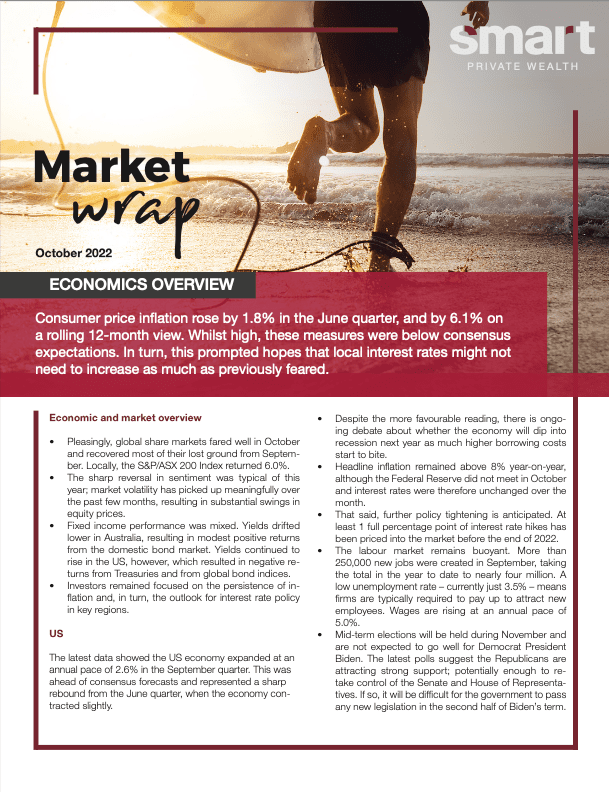Consumer price inflation rose by 1.8% in the June quarter, and by 6.1% on a rolling 12-month view. Whilst high, these measures were below consensus expectations. In turn, this prompted hopes that local interest rates might not need to increase as much as previously feared.
Australia has a high level of household debt, with a large- proportion of borrowers on variable-rate mortgages. Rate hikes can therefore be
particularly painful for Australians.
Policymakers therefore have a challenging task, balancing the need to dampen inflation through tighter monetary policy settings, without
strangling growth by crippling homeowners with sharply rising mortgage re- payment costs.
The Reserve Bank of Australia raised rates again on 1 November, by a further 0.25 percentage points. Official interest rates are now
2.85% and may be raised again in December.

While the month began with constructive discussions and agreements between the US and some of its trading partners, uncertainty returned to the market after President Trump threatened to impose new tariffs on Europe and multiple large corporates such as Apple, Samsung and Mattel, and again near month-end as the Court of International Trade deemed the global tariffs to be “contrary to law.”
The investment market volatility that kicked off in March 2025 has felt like a punch, particularly for those in or nearing retirement.